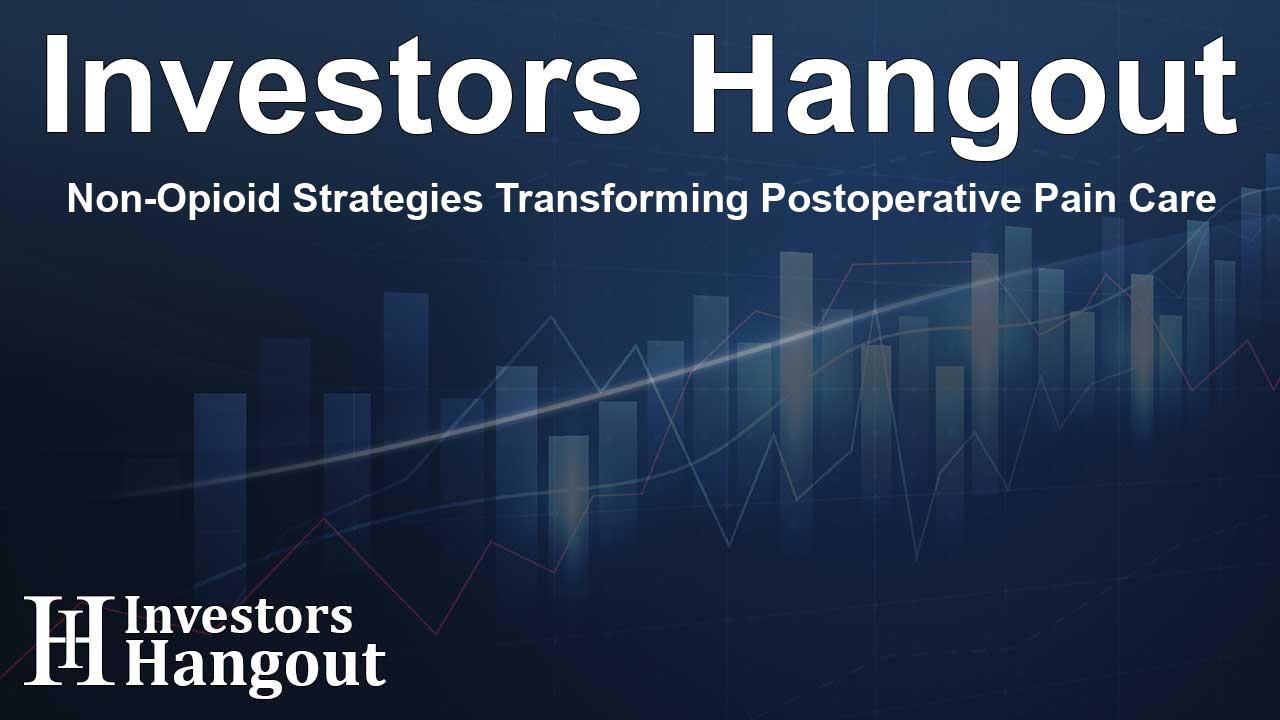Non-Opioid Strategies Transforming Postoperative Pain Care

Evolving Landscape of Postoperative Pain Management
In recent years, the postoperative pain management landscape has transformed significantly, reflecting a growing emphasis on effective pain control without depending on opioids. With the rising number of surgical procedures and increasing awareness of pain management methods, the demand for better solutions has never been more pressing.
Understanding the Shift Towards Non-Opioid Alternatives
A crucial aspect of this evolution is the rise in non-opioid alternatives, designed to alleviate postoperative pain effectively while minimizing the risks associated with opioid dependency. Non-opioid analgesics, multimodal pain management strategies, and targeted drug delivery systems are shaping new treatment paradigms. These advancements offer significant potential to enhance patient outcomes and reduce the length of hospital stays.
Current Market Dynamics
The postoperative pain management market is thriving, driven by several factors including an aging population, the prevalence of chronic diseases, and advancements in surgical techniques. The growing volume of surgical procedures worldwide fuels the need for improved postoperative pain management solutions.
Healthcare providers and patients are increasingly recognizing the importance of effective pain control for enhancing recovery outcomes. Recent developments such as novel non-opioid analgesics have expanded treatment options, enabling more personalized care that caters to individual patient needs.
Emerging Therapies in Postoperative Pain Management
Numerous promising therapies are currently in development, with a focus on enhancing efficacy and minimizing side effects. Companies are innovating with drugs like CA-008, NTM-001, and PRF-110, all of which show potential in reshaping the postoperative pain management landscape. These emerging therapies are expected to make significant impacts in assisting with postoperative recovery.
Some notable companies leading the charge in acute pain management solutions include Arthritis Innovation, Oculis, and Medincell. Their ongoing developments aim to introduce alternatives that not only manage pain effectively but also alleviate the public health concerns associated with opioid usage.
Challenges Facing the Market
Despite the positivity surrounding advancements in pain management, several challenges persist. The opioid crisis has led to stringent regulations that limit opioid prescriptions, making it critical to find alternative pain relief methods. Moreover, the lack of standardized care protocols across healthcare facilities can lead to varied treatment outcomes.
Moreover, limited awareness and training among healthcare providers concerning effective multimodal pain management strategies may hinder the swift adoption of novel therapies. The high costs of developing new analgesics also pose significant hurdles, prolonging the timeline for introducing innovative treatments into the market.
Looking Ahead: Future Directions in Pain Management
Looking towards the future, the postoperative pain management approach is expected to become more patient-centered. As healthcare systems continue to evolve, there will be increased focus on ensuring that patient satisfaction and recovery efficiency are top priorities.
This shift will see an emphasis on educating healthcare providers about innovative pain management techniques and creating more streamlined protocols for treatment. Enhanced recovery after surgery programs are becoming more commonplace, and the integration of these protocols into clinical practice will help facilitate better outcomes for patients.
Conclusion
The landscape of postoperative pain management is rapidly evolving, with non-opioid therapies at the forefront. As innovation drives change, patients can look forward to more effective, personalized care that prioritizes their recovery and well-being. The journey away from dependency on opioids is paving the way for a brighter future in post-surgical pain management.
Frequently Asked Questions
What are the main drivers of change in the postoperative pain management market?
The main drivers include the increasing number of surgical procedures, the aging population, and advances in non-opioid pain management technologies.
Why are non-opioid therapies gaining popularity?
Non-opioid therapies are gaining popularity due to their potential to reduce opioid dependency and related side effects, while effectively managing pain.
What challenges does the postoperative pain management market face?
Challenges include stricter opioid regulations, lack of standardized pain management protocols, and limited provider training in new techniques.
Which companies are leading in postoperative pain management innovations?
Key players include Arthritis Innovation, Medincell, Oculis, and other biotech firms focusing on non-opioid treatments.
What is the future outlook for postoperative pain management?
The future looks promising with ongoing research focused on enhancing patient-centered care, reducing reliance on opioids, and improving recovery outcomes.
About The Author
Contact Riley Hayes privately here. Or send an email with ATTN: Riley Hayes as the subject to contact@investorshangout.com.
About Investors Hangout
Investors Hangout is a leading online stock forum for financial discussion and learning, offering a wide range of free tools and resources. It draws in traders of all levels, who exchange market knowledge, investigate trading tactics, and keep an eye on industry developments in real time. Featuring financial articles, stock message boards, quotes, charts, company profiles, and live news updates. Through cooperative learning and a wealth of informational resources, it helps users from novices creating their first portfolios to experts honing their techniques. Join Investors Hangout today: https://investorshangout.com/
The content of this article is based on factual, publicly available information and does not represent legal, financial, or investment advice. Investors Hangout does not offer financial advice, and the author is not a licensed financial advisor. Consult a qualified advisor before making any financial or investment decisions based on this article. This article should not be considered advice to purchase, sell, or hold any securities or other investments. If any of the material provided here is inaccurate, please contact us for corrections.
